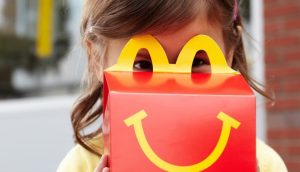Adding radio to the media mix magnifies the effectiveness of ad campaigns, according to the latest research from New York-based Radio Ad Effectiveness Lab (RAEL). The study, ‘The Benefits of Synergy: Moving Money Into Radio’ looked at five campaigns to compare the effects of using TV or newspaper alone with campaigns that combine radio ads with TV or newspaper.
The findings in every measure showed that mixed media efforts were as effective or more so than solo media campaigns:
-34% increase in brand recall than with TV alone;
-103% higher unaided brand recall than with newspaper-only campaigns.
The effects of two TV ad exposures were compared to the effects of one TV ad plus two radio ads and then the same comparisons were made between two newspaper ads versus one newspaper ad plus two radio exposures. Five campaigns for five different product categories were studied: a fast food chain, an OTC allergy medicine, a car brand, a cellphone service, and a credit card brand.
The effectiveness measure tests conducted before and after exposure to advertising were:
-Brand name recall
Tests showed that adding radio to the mix generated higher top-of-mind recall and total recall than the campaigns using only TV or print. Unaided recall for campaigns with radio and TV generated one-third more brand recall than the TV-only group. This was even more significant in the newspaper campaigns where the radio and newspaper together resulted in three times the recall as newspaper-only campaigns.
-Impulse brand selection (persuasion)
In the television comparisons, there was an 8% shift in first-choice preference of the test brands by respondents exposed to two radio ads instead of one TV spot but only 5% of respondents chose the test brands after exposure to two TV ads. Those exposed to two newspaper ads showed no positive shift in brand preference while 6% in the radio-newspaper group preferred the test brands.
-Competitive imagery
Respondents were asked to compare the test brands with their chief competitors through a series of attribute statements. Results in this section were only marginally higher for the radio-inclusive campaigns than for TV or newspaper alone.
-Main message playback
For the television groups, with radio added, content playback was more correct in three out of five situations. Message playback for radio-newspaper advertising was on average 62% higher than for newspaper only campaigns.
RAEL concludes that adding radio to the mix greatly improves aided and unaided brand recall and first-choice brand selection. The report states that radio is more than a supplementary medium and a TV-radio or newspaper-radio campaign is more powerful than TV or newspaper alone. It says although radio is a powerful alternative to other media, it is a valuable part of mixed-media campaigns because of its ability to communicate an advertiser’s message, have it received, remembered and played back.
RAEL was set up in 2001 as an independent organization funded by the industry to work with clients, agencies, and broadcasters to further understanding of radio effectiveness. The Radio Marketing Bureau (RMB) is RAEL’s main Canadian partner.























